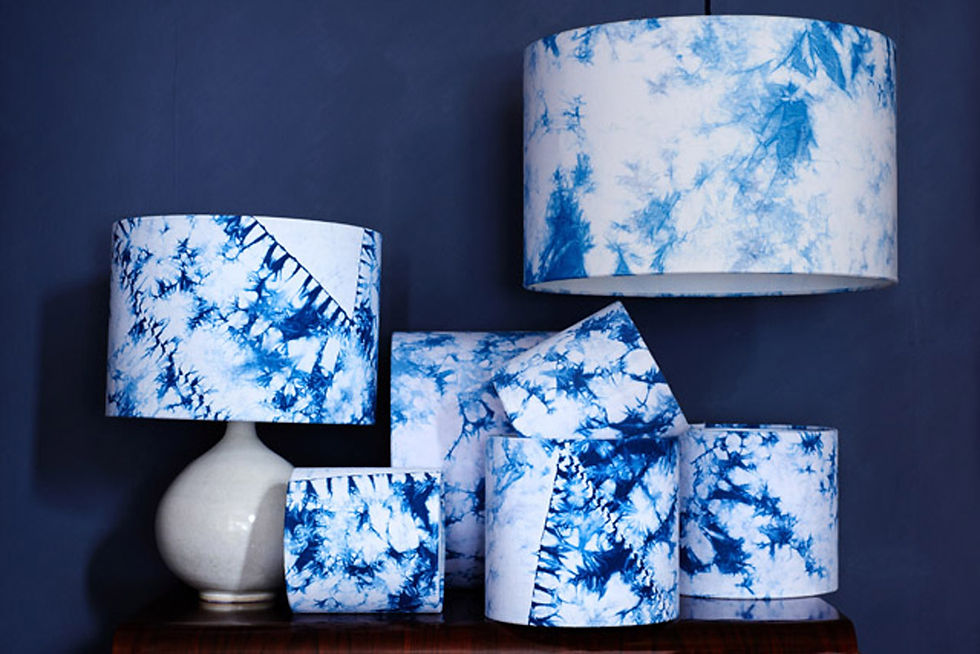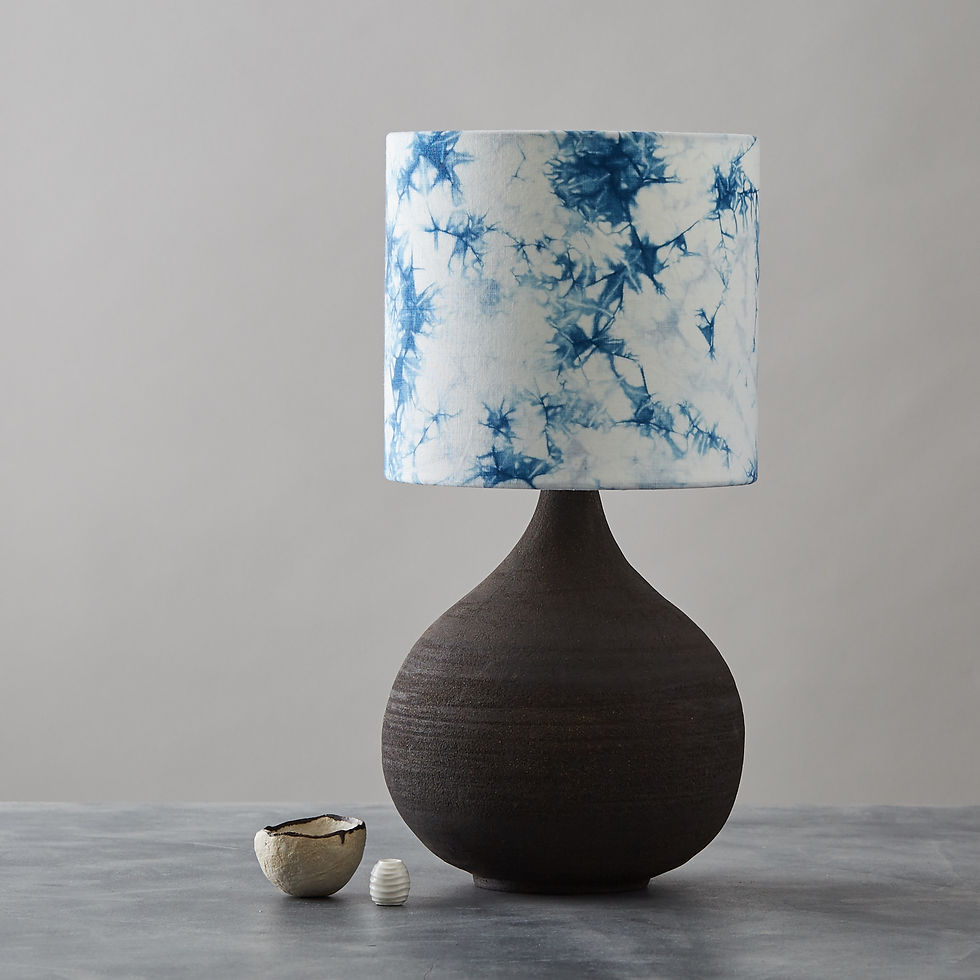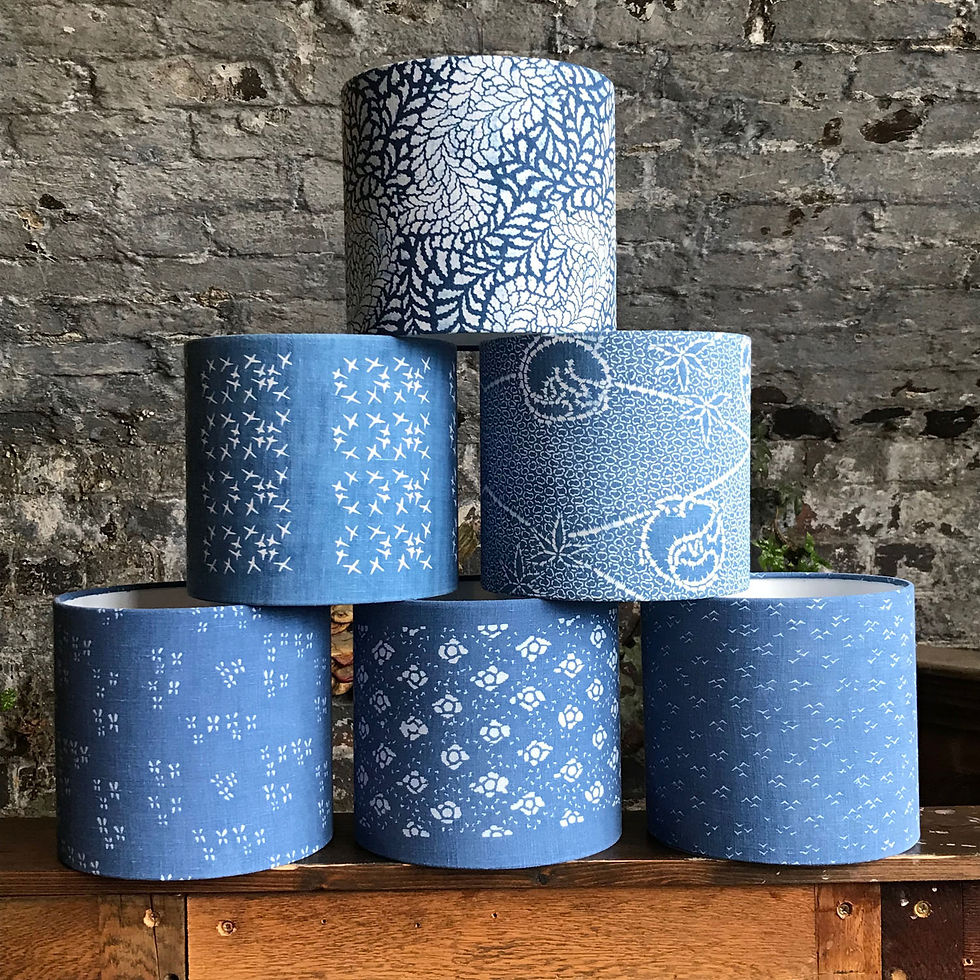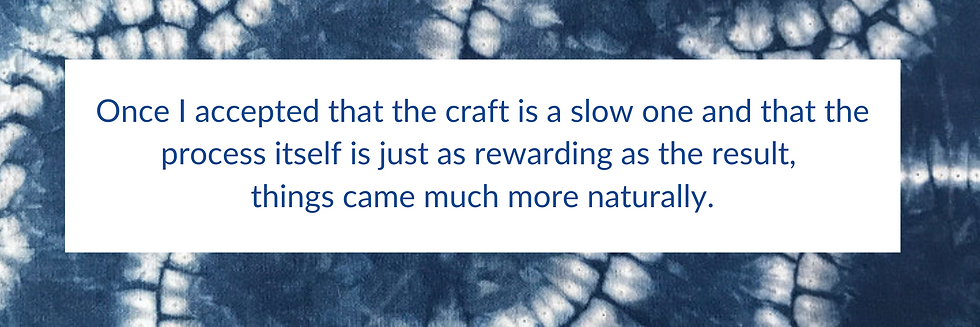Meet the Maker - Romor Designs
- Dannells Admin
- Feb 16, 2022
- 5 min read
Updated: Oct 11, 2023
Far from ordinary, each of Romor Designs' lampshades has a wonderful, creative and individual story, very much like Romor Designs' founder, Rob Jones. Starting out learning the Japanese art of Shibori to indulge his creative side, he now specialises in this and many other traditional Japanese crafts and using his skills and knowledge he creates beautiful one-of-a-kind accessories and homewares, sharing his passion by teaching others too. We find more about Rob's story and the fascinating techniques of Shibori in this month's Meet the Maker interview.

Hi there!
How are you today and what’s on your workbench?
I am very well, thank you. At the moment I’m working on a big mending project for a private client. It’s applying Boro style patch mending with sashiko embroidery in a variety of different Japanese fabrics, some vintage, from deconstructed kimono.
How do you start the design process and where do you get your design inspiration?
I often start with a new Shibori technique. There are literally hundreds of variations as Shibori has been practised in Japan for over 1500 years. I’ll practice the traditional method until I’m confident I can do it well and then see if I can apply it in new and different ways to create something original and modern.

How would you describe your craft, for those new to it?
I do a variety of different Japanese textiles crafts but the main one is Shibori. In a nutshell, this is the art of compressing fabric using stitching, binding and other methods. The dye cannot penetrate into the compressed areas so, once dyed and the threads are removed, the patterns are revealed.
How did your passion for Shibori come about?
I came across it as a short course at West Dean College near Chichester, a place I’d escape to a couple of times a year to indulge my creative side when I still had an office job. Then, through Pinterest, I stumbled across an amazing textiles designer in Japan called Bryan Whitehead and went to do an intensive Shibori and indigo dyeing workshop with him in 2014. A year after I returned from my trip I was made redundant from my job so decided to switch to being a Japanese textiles designer and teacher and the rest is history!
What other crafts has this inspired?
I originally learnt Shibori and Katagami (stencilling with a rice paste resist) but have since taught myself Sashiko embroidery, Kogin counted thread Sashiko, Boro mending and, following a workshop in Cornwall with Michel Garcia in 2016, Natural dyeing. I teach classes in all of these subjects.
When and why did you start making lampshades?
The lampshade making came about in 2016. I’m part of a local group of artists where I live called the Muswell Hill Creatives. Another artist is a potter and started making lamp bases. We were at a local popup together and got chatting and she suggested I should make the lampshades to go with her bases.

What’s your favourite part of the lampshade making process?
I love making the fabrics, of course. The best bit of that is the reveal when you take the stitches or binding threads off. But I also like the moment when you’ve tucked the last bit of the fabric underneath the ring and have a finished piece.
In your online shop, what’s your most popular selling shade?
The marbled effect ones are the most popular.
How do you choose the finished fabrics for your lampshades?
I design and make all my own fabrics so that’s part of the original design process.
What types of dyes do you use to get the variation of colours in your lampshades?
I work mainly with indigo but I also use Myrobalan which gives a lovely gold colour on its own and teal when overdyed with the indigo, and madder (pink/red) and Logwood (purple) and Lac (burgundy) are also firm favourites.

Any tips for new lampshade makers in business?
Finishing is really important. Make sure you tuck all the ends under really well.
How do you manage all the different elements of your business?
My days are very varied, which is one of the things I love most about what I do. I typically work on admin, marketing and social media in the mornings and then I’m either preparing work to dye or doing stitch projects at home or my studio dyeing my fabrics. I also teach on Zoom and in knitting/haberdashery shops, and I sell at exhibitions too. Like many people who work for themselves, I’m very bad at taking time off but I don’t get up early!
Can you tell us more about the classes you teach?
I teach 2-hour classes on Zoom including 3 Shibori classes, 2 Sashiko classes, Boro inspired mending and Kogin counted thread sashiko and then 2.5 to 3-hour classroom-based workshops, Shibori classes with indigo dyeing. I also run day workshops in Natural Dyeing and Katagami stencilling at my studio in Muswell Hill. Classes are suitable for complete beginners and are a fun way to be introduced to Japanese textiles crafts. You can see what I offer and book at www.romordesigns.com/workshops

When are you at your most productive?
I’m at my best late afternoon/early evening. I’m a night owl so it takes me a little while to get fully up to speed in the mornings, hence the admin, rather than creative work at that time of day!
How do you approach your work?
When I’m dying with indigo I make a batch of fabrics to dye. That’s because the process involves repeated dips in the dye and periods where it has to rest. Batch working is the most efficient way to go as pieces I’ve just dyed can rest whilst I dye other pieces so I don’t have to stop. The work is also physically demanding as there’s a lot of rinsing to do. Shibori comes from the Japanese verb ‘Shiboru’, which means to wring or to squeeze and I certainly do a lot of that when dyeing my work!

And your favourite sustenance when you’re working?
I have a sweet tooth but mainly only chew gum when I’m in the studio as it helps me to concentrate. I’ll usually go out for a coffee at my local coffee shop, Owens for a latte and a GF almond chocolate cookie!
Where would you like to be in 10 years time?
I’ve started to make a few art pieces in the last couple of years so I’d like to be doing exhibitions in galleries alongside my other work. In recent years I’ve been accepted as a teacher at West Dean, so I’d really love to still be doing that too as it’s one of my favourite places to be.
What have you learned that’s been invaluable to your creative process?
Patience! When I started out I was in a mad rush to get things stitched up to dye and the results weren’t always that good. Once I accepted that the craft is a slow one and that the process itself is just as rewarding as the result, things came much more naturally. It’s almost meditative for me now and very calming.



See more of Rob's beautiful and individual Shibori lampshades, homewares, workshops and courses on his website below. Give him a friendly follow on Instagram and Facebook.
Instagram @romordesigns
Facebook @romordesigns
Website www.romordesigns.com
#meetthemaker #RomorDesigns #shiborilampshades #homwewaresbusiness #Japenesecrafts #shibori #sashiko #Kogin #naturaldying #WestDeanCollege #professionalshademaker #lampshademakers #lampshademaking #sellinglampshades # #startupshademaker #creativebusinessadvice #smallbusiness #smallbusinessuk #lampshadeinspiration #bespokeshades #uniqueshades #lampshades #lampshademaker #bespokedesign #oneofakindshade #handmadeshades
(small).jpg)
Comments